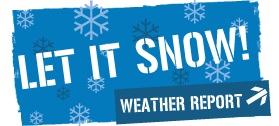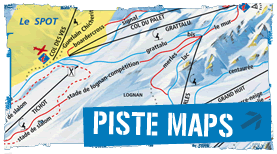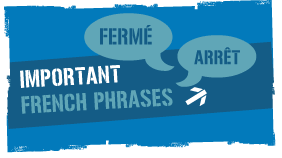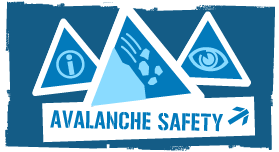Weekly report from HAT - 15/04/09
This weeks tips and snow report from Henry
This Weeks HAT Snow Report
The past week was fairly typical for this time of year: after snowstorms in some parts of the French Alps near the border of Italy e.g. the Southeast part of Savoie (Val d'Isère, Tignes and especially Bonneval-sur-Arc), the temperatures became very, very warm.
The warm temperatures created melt-freeze cycles immediately on east, south and west faces up to over 3000 metres; the melt-freeze cycles were strong enough to make for some great spring skiing but the new snow led to a couple tragic accidents in the areas that got a lot of snow.
For a brief discussion on melt-freeze and how to get the best spring skiing, see last week's Mountain Echo or on my post on Tuesday April 1 (there is also a summary of one of the recent accidents on this site).
For this coming week, it looks like snowpack conditions will continue to be much the same as they have been: with some fresh snow on a couple of occasions combined with melting and freezing.
Tip of the week:
Most avalanche accidents happen on North facing slopes because the stability there is much less predictable than on sunny slopes. At this time of year we know that when a sunny slope has been in the sun for a long time, it is unstable. When the snowpack on that same slope has frozen, it is very stable.
But on North facing slopes that have not been subjected to melting and freezing just after a snowstorm, the instability can linger for a while. This is because:
1. Initial instability comes quickly on slopes that are subject to intense sunshine or high temperatures, but then these slopes become stable again once they have frozen.
2. However, slopes that don't get a lot of sun right away after a snowfall (e.g. high north facing slopes) will stay cold and powdery for a day or two and they can remain unstable in steep areas for several days.
So after a fresh snowfall, apply the key points of off-piste safety:
A) Think about your choice of slope and which direction it is facing (N,S,E,W)
B) Go one at a time or keep good distances between each group member so you only expose one person at a time to any danger (like cliffs, trees, rocks or narrow valley bottoms bellow)
C) Stop/regroup at islands of safety (places that are not exposed to avalanches above and/or not exposed to danger below).
Have Fun, Be Safe!
Henry and the HAT Team
See Henry's Avalanche Talk for events this week!
Avalanche safety bulletin
N73080411
BULLETIN FOR ESTIMATING THE RISK OF AVALANCHE
de SAVOIE valid outside of marked trails and open FOR THURSDAY, APRIL 9, 2009 (written on Wednesday, April 8)
ESTIMATE OF RISK UNTIL FRIDAY EVENING:
For all the mass of Savoy: LIMIT RISK - Level 2 evolving day RISK MARK - Level 3.
WEATHER OVERVIEW UNTIL FRIDAY EVENING:
Among the sun sails and a few cumulus cloud (low risk ounded). Some gusts (South foehn and / Lombard).
isotherm 0 ° C: around 2400 meters. Wind General to 3000 m: SOUTH EAST to 10 to 40 km / h.
Snow conditions:
The snow is above average in Haute Maurienne elsewhere it is normal for the period. It starts between 1200 and 1700 m. The snow depth at 2000 m is 50 to 160 cm, but it exceeds 250 cm to 2500 m Haute Maurienne.
The snow is usually like spring, early morning crusty then quickly damp day and even "rotten" below 2200 m to 2800 according to the exhibition. Above, there are some shady areas with a little dry snow but often windy near the peaks.
STABILITY Snowpack:
PROBABLE AVALANCHES WET SNOW
Spring conditions are now in place with a volatile melting takes over after a day in freezing often limited (better at high altitude). We should expect some attrition over the hours in the form of heavy wet snow, sometimes with a certain magnitude (bottom plate as Haute Maurienne for example).
The evolution of skiing in heavy snow that may facilitate its flow (note the hours for off-piste skiing and hiking). It is also possible that "old" but sometimes thick plates remain in the North to North-east, mostly above 2500 m and in particular in the vicinity of Piedmont and the East-Vanoise (prudence in case of unfavorable topography as a break in slope, ridges, passes ...).
TREND LATER RISK:
Stationary.
Weather updates France this newsletter every day to 16h.
Weather forecast
Issued Wednesday 8 April 2009, 17:16
Status and trends
Mostly cloudy in the South for some time before the rains in the afternoon, the sky will brighten up Saturday.
Thursday April 9:
Night is the veil thick enough to prohibit the good regel snow. The sun is up in the morning and are rare Giboulées posibles afternoon in the mountains. pressure 1018 -> 1015 mb plainebassin in Grenoble: 9 / 21 ° C, max wind SE / 5 noeuds1 knot = 1.852 km / h = 0.51 m / s to 1500m above ground: 5 / 9 ° C, wind east-> SSE/6-> (night) SE/10 knots 3000m above ground: -3 ° C, wind SE/8-> SSE/20 knots iso 0 °: 2500 iso -10: 4300m
Friday 10 April:
Beautiful time especially in the North and South wind well established. pressure 1016 -> 1010 mb lowland: 11/20 ° C, wind SE / 6 knots to 1500m above ground: 5 / 9 ° C, wind knots SE/10 3000m above ground: -3 ° C, wind SSE/20 / nodes iso 0 °: 2500 iso -10: 4200m
Saturday 11 April:
Mostly Cloudy night and morning, the clouds became cumbersome in the afternoon. No precipitation. pressure 1010 mb lowland: 9 / 21 ° C, wind ESE / 7 knots in the morning to 1500m above ground: 5 / 8 ° C, wind SE/10-> East / 6 knots 3000m above ground: -4 ° C, wind knots SE/16 iso 0 °: 2400 iso -10: 3900m
Sunday 12th April
Mediterranean coasts of rain, humidity could largely far beyond.















